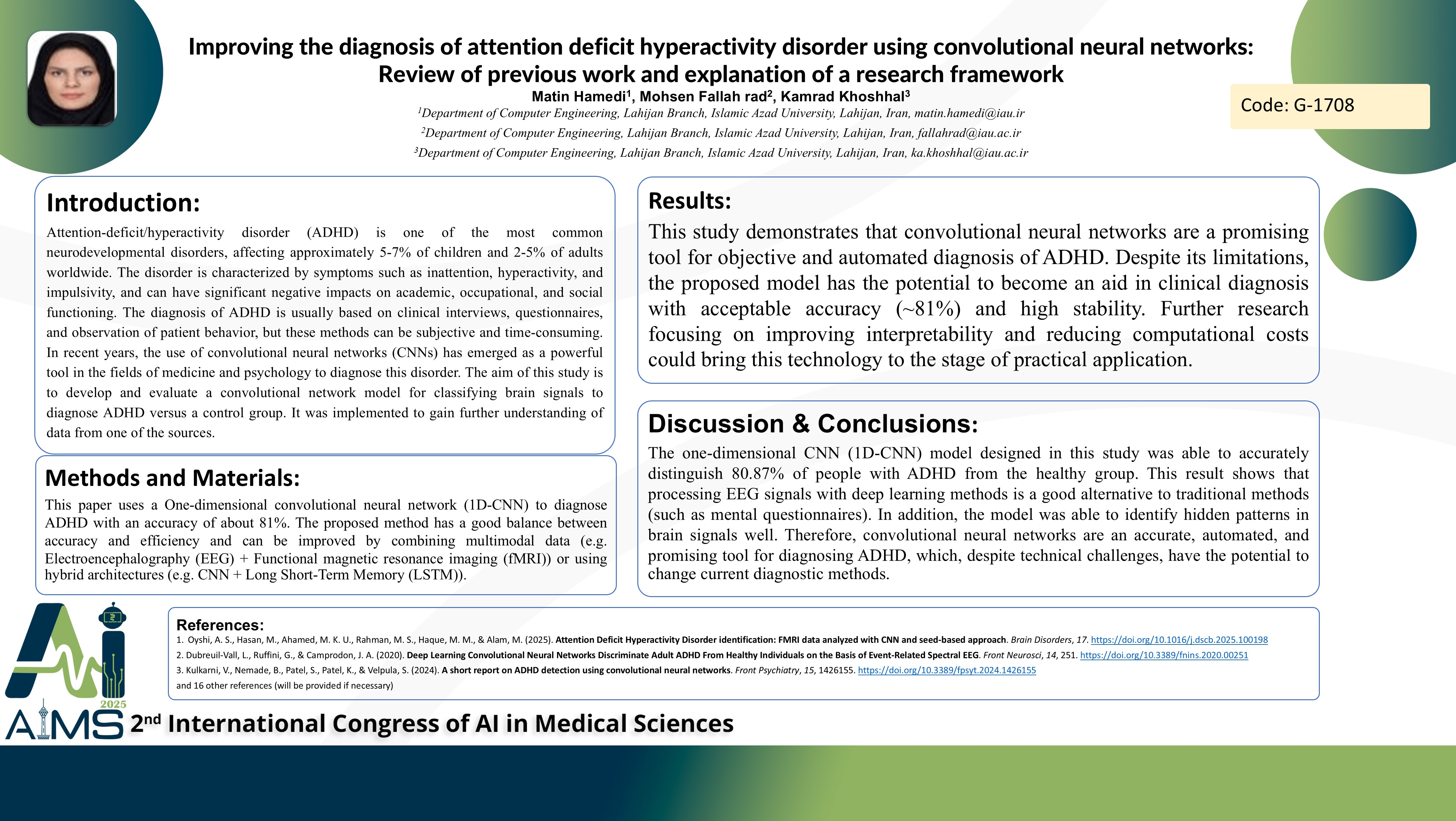Improving the diagnosis of attention deficit hyperactivity disorder using convolutional neural networks: Review of previous work and explanation of a research framework
Code: G-1708
Authors: Matin Hamedi ℗, Mohsen Fallah Rad *, Kamrad Khoshhal
Schedule: Not Scheduled!
Tag: Health Policy, Law & Management in AI
Download: Download Poster
Abstract:
Abstract
Background and aims: Attention-deficit/hyperactivity disorder is one of the most common neurodevelopmental disorders, affecting approximately 5-7% of children and 2-5% of adults worldwide. The disorder is characterized by symptoms such as inattention, hyperactivity, and impulsivity, and can have significant negative impacts on academic, occupational, and social functioning. The diagnosis of ADHD is usually based on clinical interviews, questionnaires, and observation of patient behavior, but these methods can be subjective and time-consuming. In recent years, the use of convolutional neural networks has emerged as a powerful tool in the fields of medicine and psychology to diagnose this disorder. The aim of this study is to develop and evaluate a convolutional network model for classifying brain signals to diagnose attention deficit hyperactivity disorder versus a control group. Method: This paper uses a One-dimensional convolutional neural network to diagnose ADHD with an accuracy of about 81%. The proposed method has a good balance between accuracy and efficiency and can be improved by combining multimodal data (e.g. Electroencephalography + fMRI) or using hybrid architectures (e.g. CNN + LSTM). Results: This study demonstrates that convolutional neural networks are a promising tool for objective and automated diagnosis of ADHD. Despite its limitations, the proposed model has the potential to become an aid in clinical diagnosis with acceptable accuracy (~81%) and high stability. Further research focusing on improving interpretability and reducing computational costs could bring this technology to the stage of practical application. Conclusion: The one-dimensional CNN model designed in this study was able to accurately distinguish 80.87% of people with ADHD from the healthy group. This result shows that processing EEG signals with deep learning methods is a good alternative to traditional methods (such as mental questionnaires). In addition, the model was able to identify hidden patterns in brain signals well. Therefore, convolutional neural are an accurate, automated, and promising tool for diagnosing ADHD, which, despite technical challenges, have the potential to change current diagnostic methods.
Keywords
ADHD, CNN, Deep Learning, EEG, fMRI
